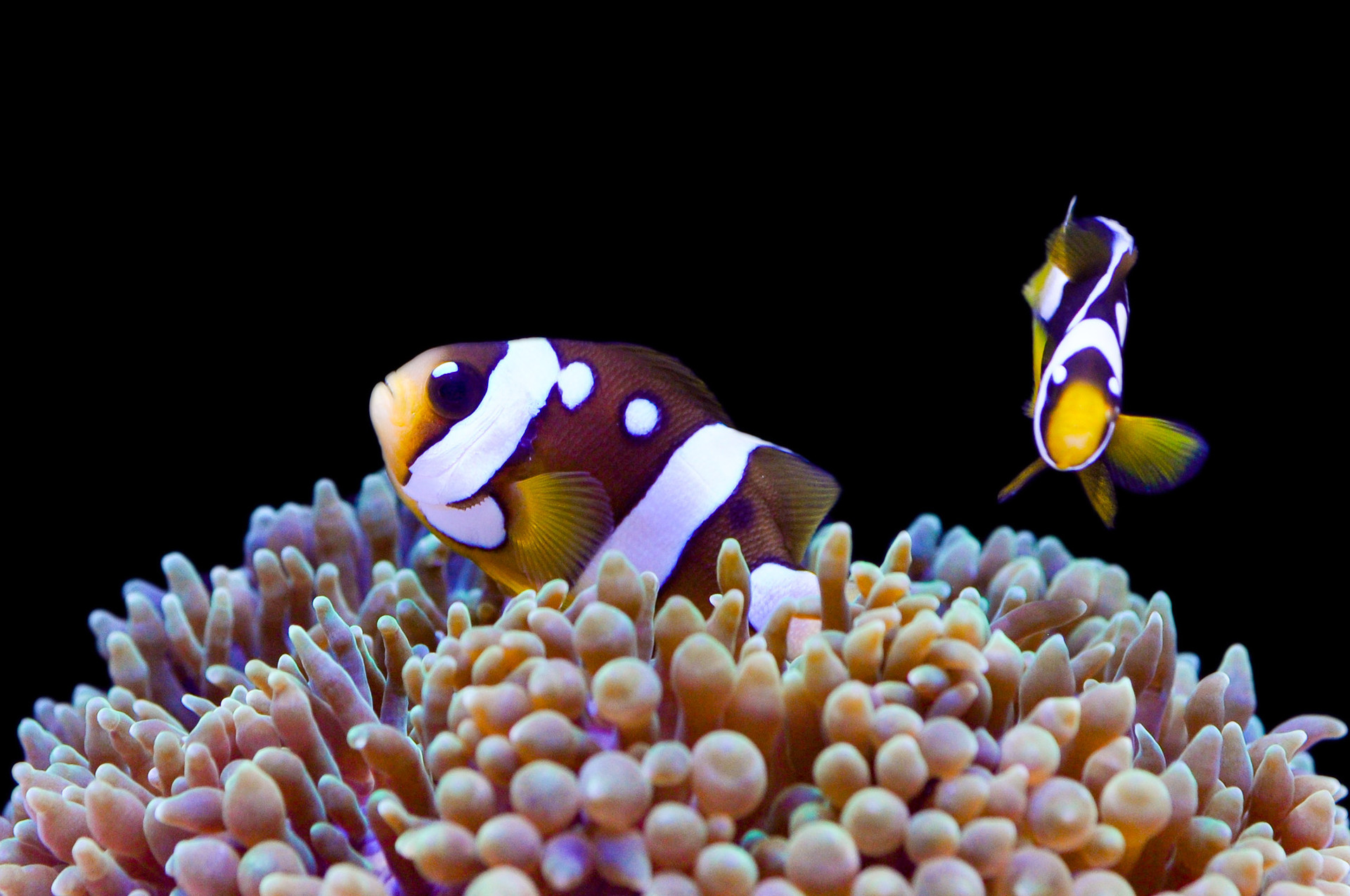Pairing Anemones and Clownfish in the Home Aquarium

For many, the draw to start a saltwater aquarium is inspired by seeing an already established marine aquarium, documentary, or a popular cartoon where clownfish happen to be hosting an anemone. While Clowns are easily kept by amateur aquarists, thanks in part to captive breeding initiatives which has made keeping them in captivity more sustainable, as well as clownfish just being resilient in general, anemone, and invertebrate husbandry in general, is slightly more complicated and necessitates a few more steps. Like many corals, anemones are photosynthetic Cnidaria and will require reef tank lighting that meets their PAR (Photosynthetically active radiation) needs. Like coral they house symbiotic algae (zooxanthellae), which allows them to, in part, be sustained by sunlight through photosynthesis. While there are many species of anemones, today we’ll cover six of the most common species sought out to recreate clownfish hosting behaviors.
Carpet Anemones (Stichodactyla haddoni) and (Stichodactyla gigantea)
As looks go, it’s difficult to beat the aesthetics of the carpet anemone, it’s wavily dotted textures and a vast array of different color options from muted greens, to neon green to even red, blue and purple certainly draw the eye in. While there are several species of carpet anemones, the two we find most commonly in the trade are S. haddoni and S. gigantea. Both of these species look very similar and can be difficult to tell apart if you aren’t encountering them in their natural habitat. In the home aquarium these two species enjoy similar but slightly different niches. S. haddoni prefers to bury its entire foot in the substrate so that it can retract if threatened. While S. gigantea also prefers to have its foot buried in substrate, it also looks for something more solid beneath the substrate to attach too. While you should wear hand protection at all times while handing aquarium denizens, carpet anemones, in particular, have nematocysts that punch a pack, even to human skin, and of course other slow-moving aquarium fish that are not immune to its sting. That should give you some clue about their feeding, while they do make up most of their sustenance via their photosynthetic zooxanthellae, they do need to be directly fed a small amount of meat of a marine origin once to twice a week. The good news is that both of these species are known to host a wide array of clownfish species including but not limited to, pink skunk clowns, clarkii clowns, and of course, the current darling of captive breeding initiatives, the Ocellaris clownfish. Both of these anemones can reach rather large diameters, so you’ll want to take that into account while aquascaping if possible.
Long Tentacle Anemone (Macrodactyla doreensis)
Another popular choice for marine aquarists is the long tentacle anemone also known as the corkscrew anemone. This anemone also prefers to reside in deep fine substrate as it is often found in shallow oolitic or muddy bottoms. Like many other anemones and coral, LTA’s too derive much of their sustenance from photosynthesis as well. LTA’s in particular tend to do poorer than other anemones under improper lighting due to most of them being found in shallow areas. This anemone too can benefit from infrequent feedings of finely chopped marine meats. Clowns that will commonly host in LTA’s include, Clarkii, Maroon Clowns, as well as Pink Skunk Clowns.
Ritteri Anemone (Heteractis magnifica)
Ritteri Anemones are also referred to as Magnificent Sea Anemones, and with good reason as wild specimens have been measured at over 3 feet in diameter (~1 meter). In the home aquarium however, they rarely reach half of that size. Of the anemones discussed here today, the Ritteri is perhaps the most light hungry, preferring to perch atop the rock work in direct light. It’s tentacles are long as well, reaching nearly 3 inches (~7.5cm). Because they prefer to perch atop the rock work, this means they are built to withstand strong and turbulent flow, something you’ll want to replicate in your home aquarium. Since Ritteri rely so heavily on their photosynthesis, you can get away with infrequent feedings in comparison to some of the other anemones discussed here today. In the wild you can find a few species of clowns hosting in Ritteri anemones, including True Percula Clowns, and both orange and pink Skunk Clownfish.
Sebae Anemone (Heteractis crispa)
The Sebae anemone is also known as the leathery sea anemone and is native to the Indo-pacific regions. The Sebae is quite mobile and can be found both on hard substrate bottoms an attached to the rock-work or reef-building corals closer to the surface. As with the other anemones discussed here they are photosynthetic so you’ll want to recreate a shallower reef lighting scheme in the home aquarium. As a relatively larger anemone, they too can benefit from small feedings. Sebae anemones in part due to their large range host most species of clownfish and even juvenile damselfish, specifically D. trimaculatus.
Bubble-Tip Anemone (Entacmaea quadricolor)
The Bubble-Tip Anemone is far and away the most popular choice amongst home aquarists, and for good reason. They are extremely resilient by anemone or invertebrate standards and will often reproduce in captivity. One might say the only downside is that they have a penchant to move about the aquarium and this can cause concern for less than motile inverts such as coral, although this can be said to be an issue with most anemones. The bubble-like appearance of the tips f there tentacles are unmistakable as are their array of vibrant color choices. Like the sebae anemone its a dream come true for matching with clowns as over 13 species match with it in the wild. This anemone can benefit from routine feedings, especially if you want to propagate them.